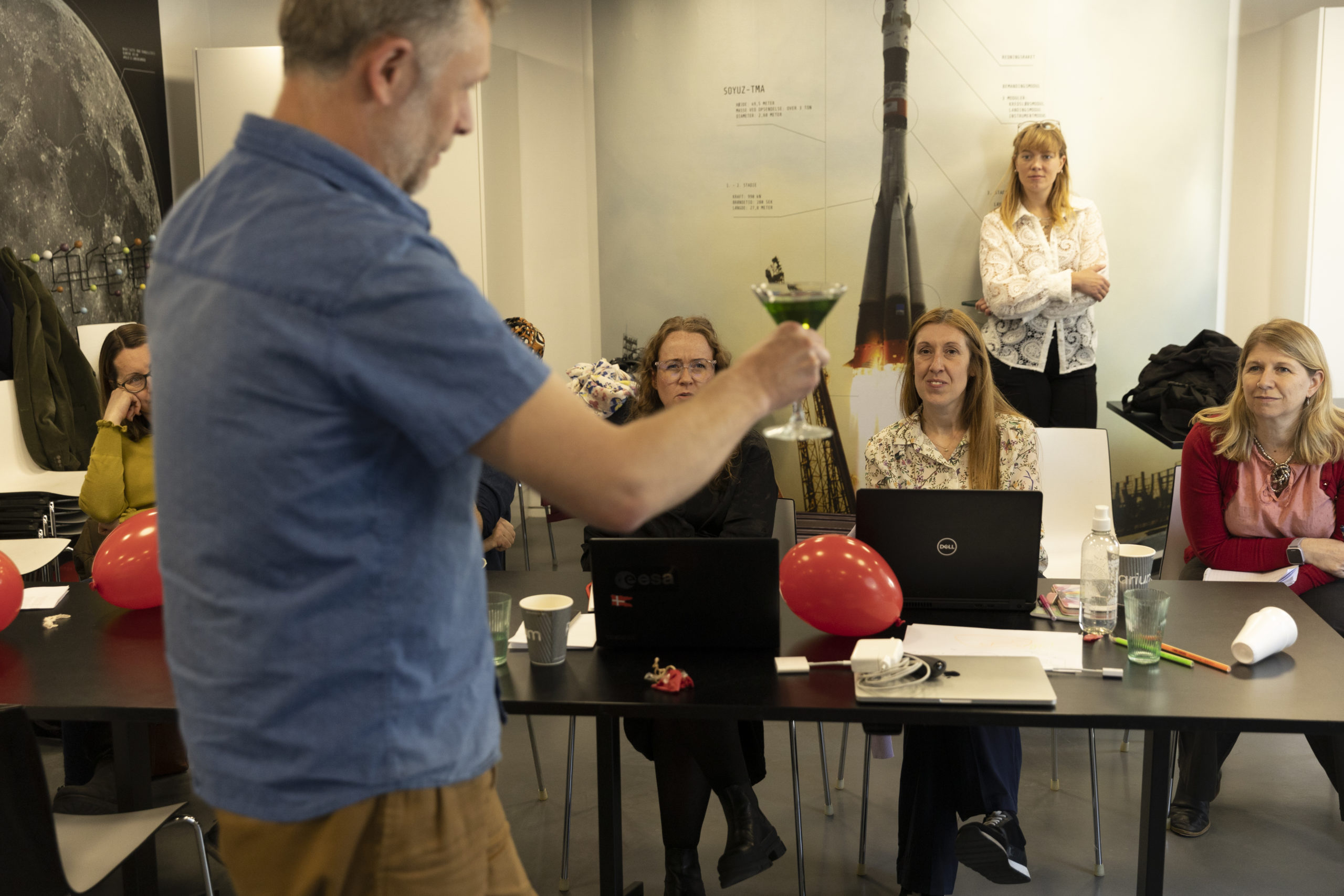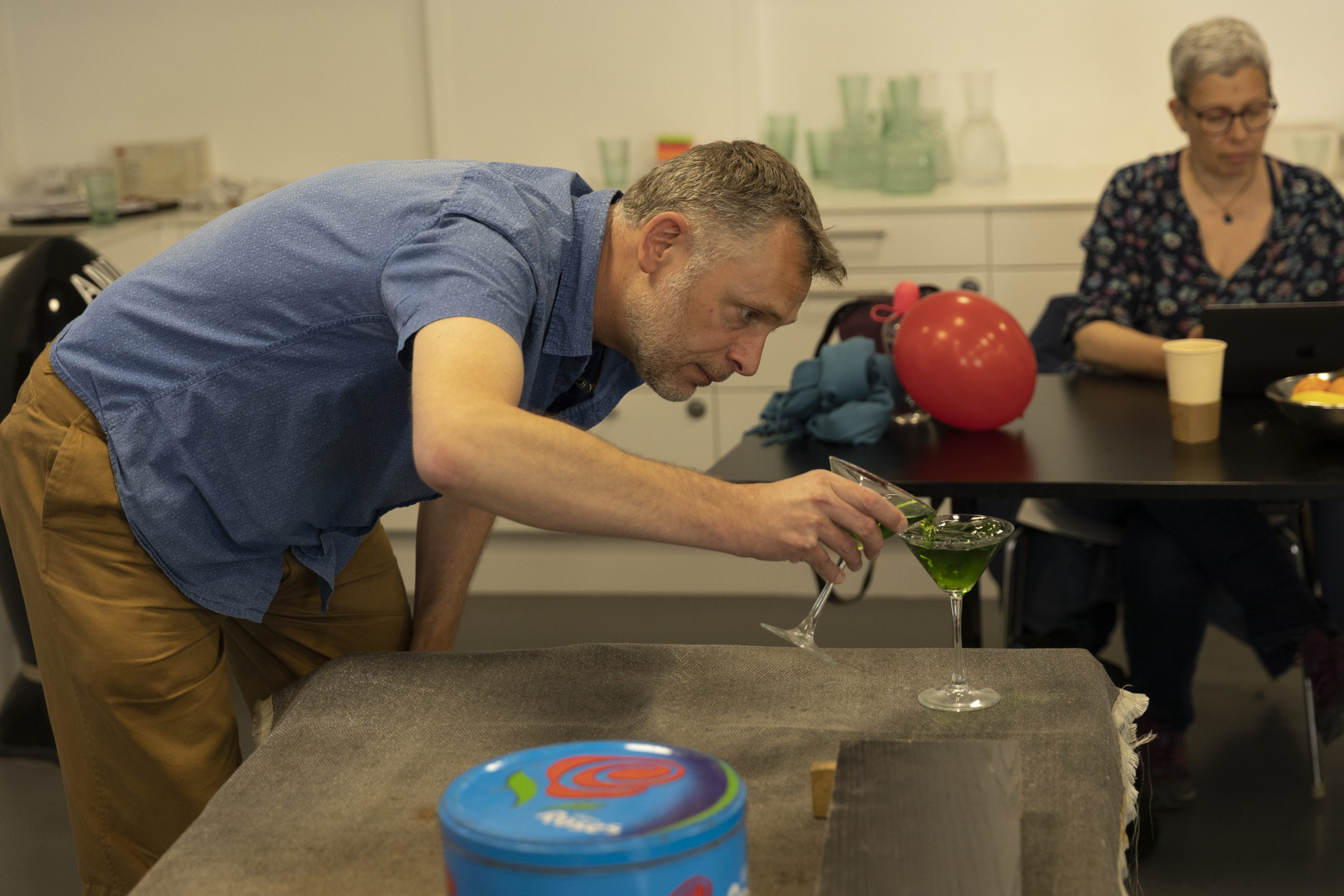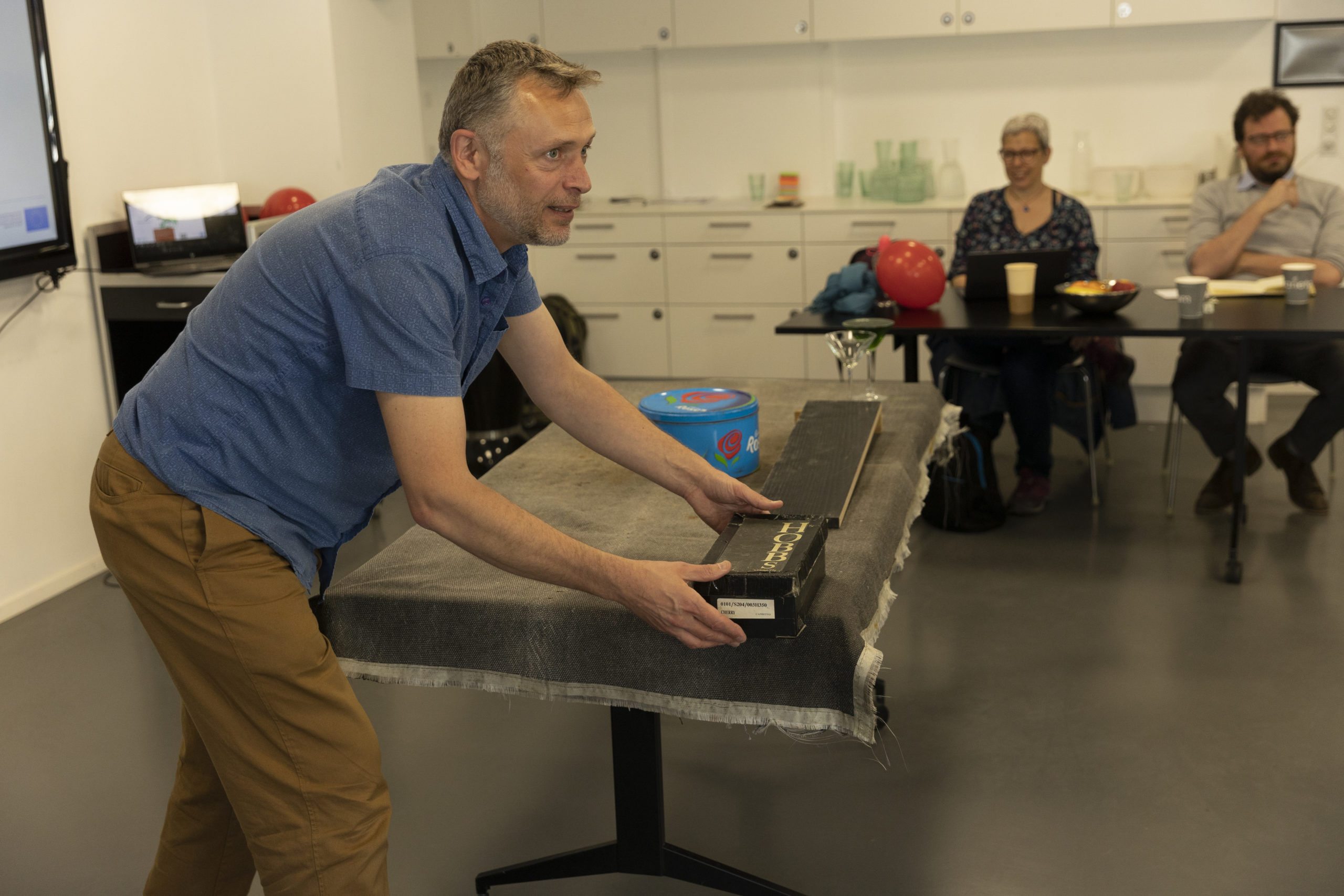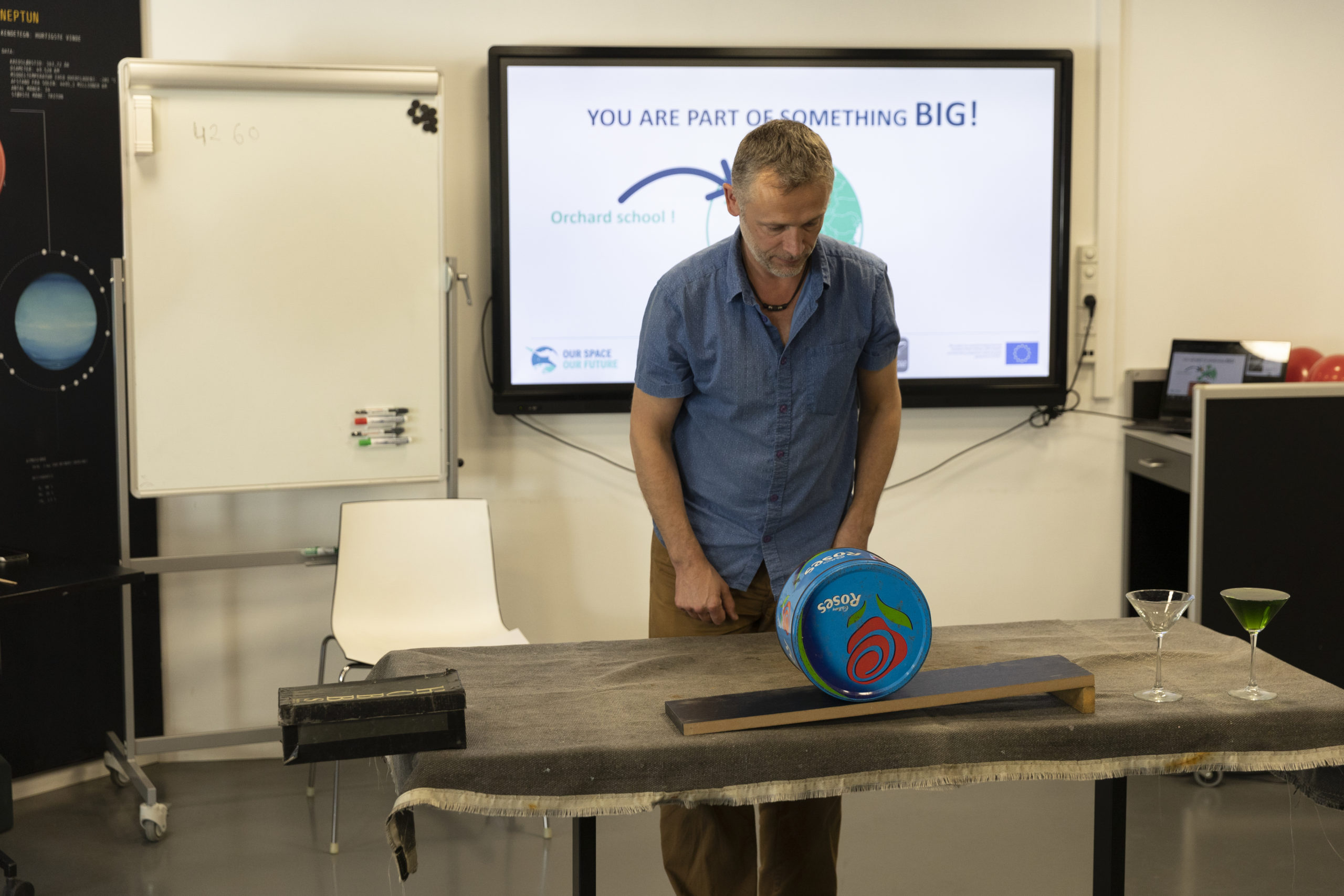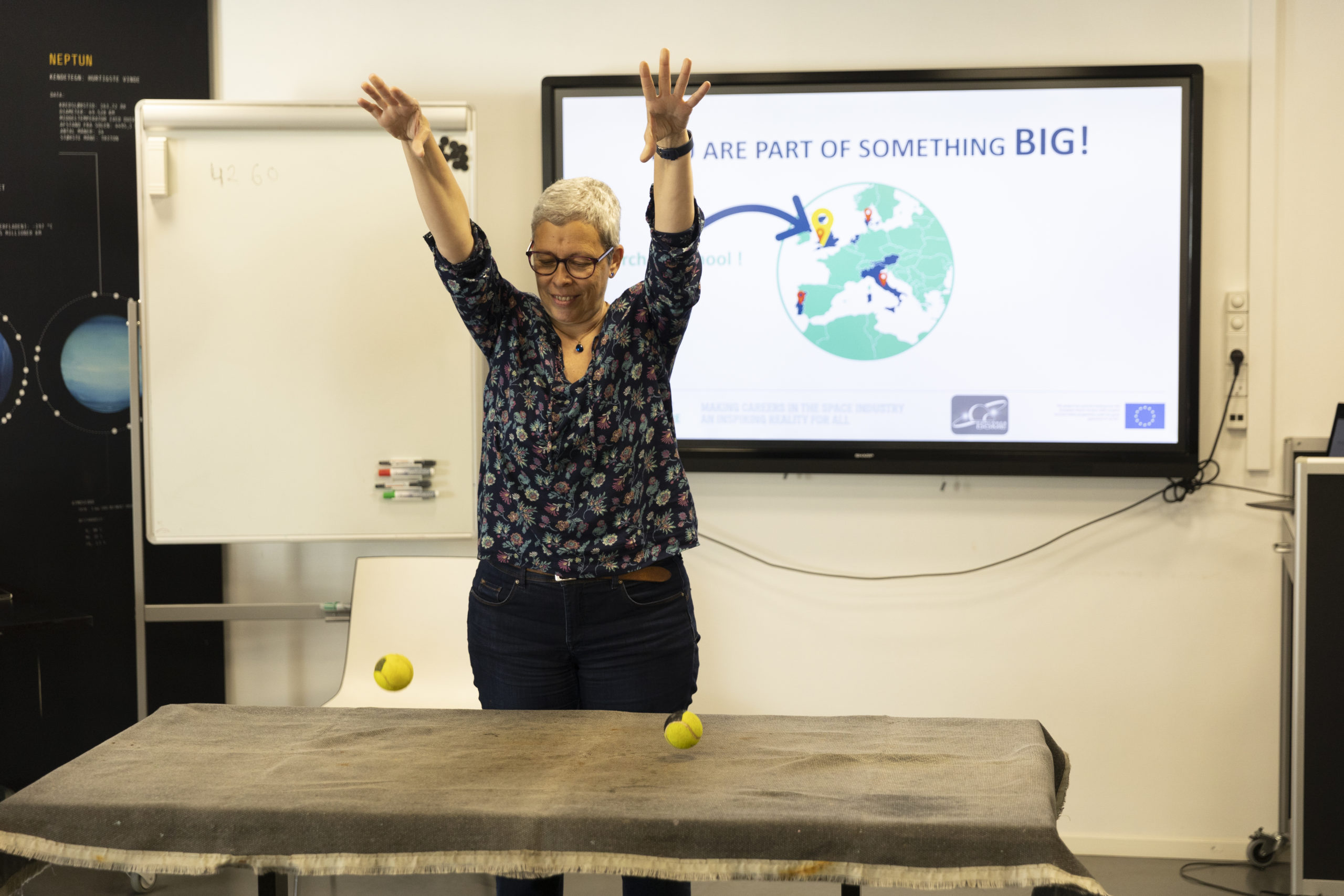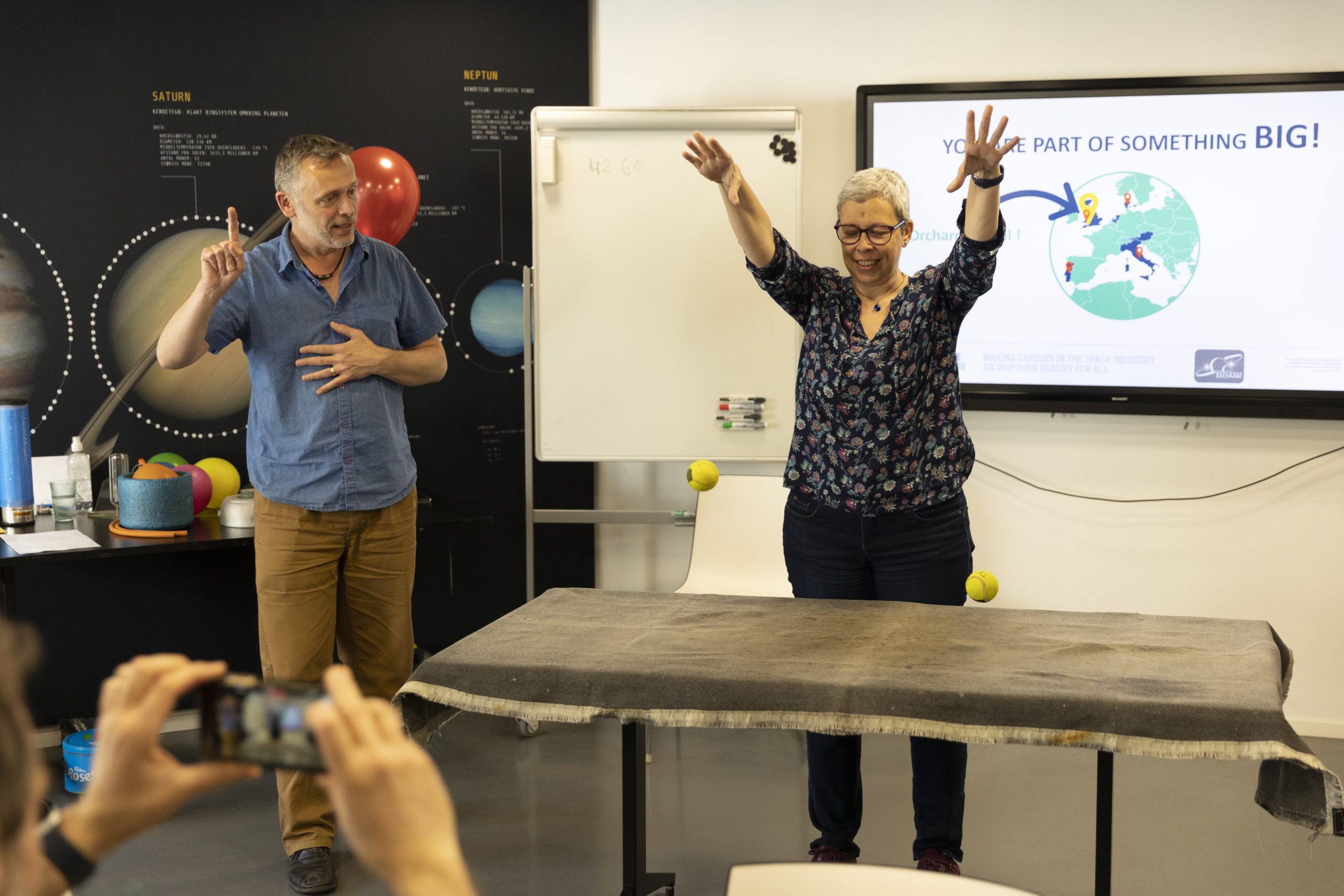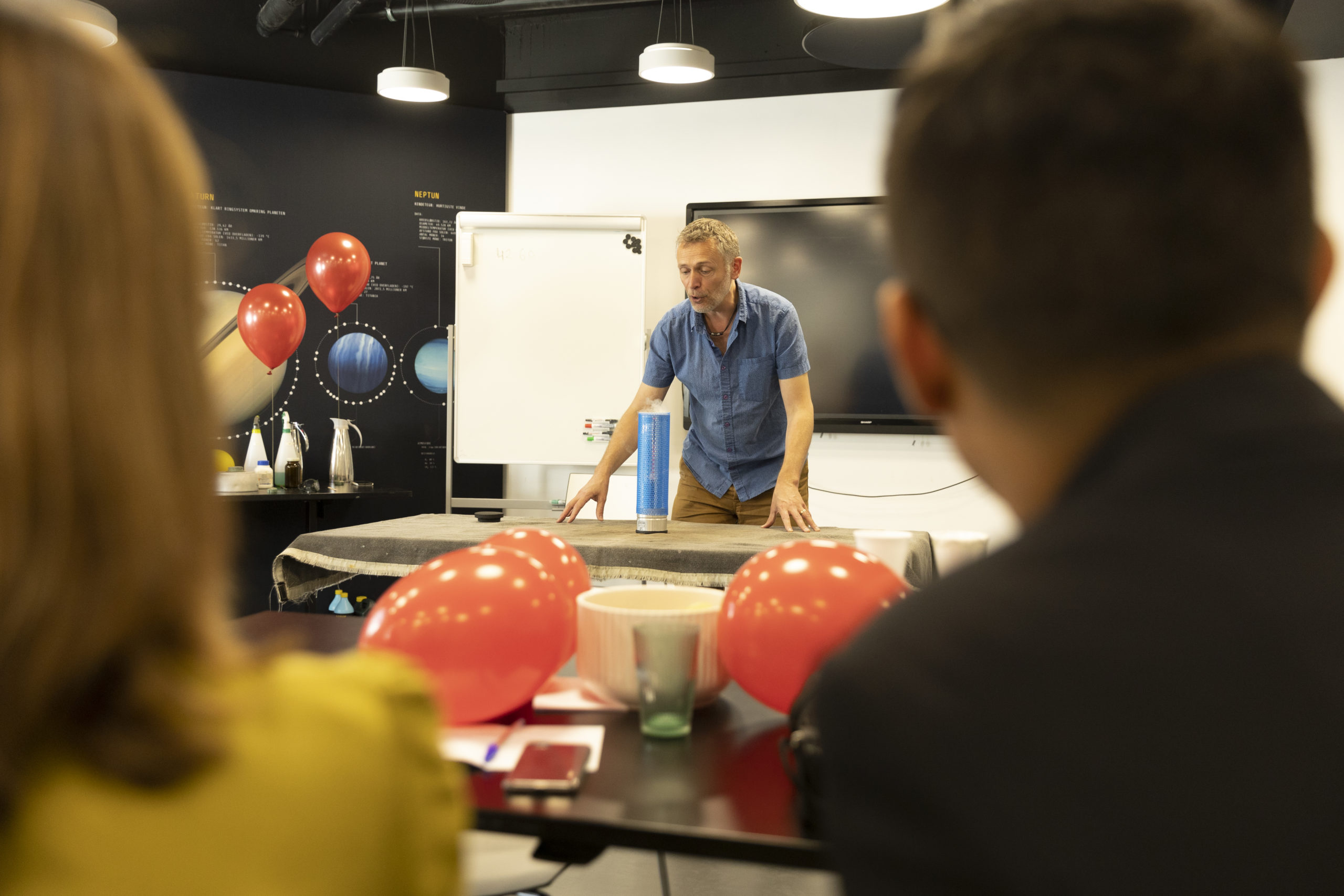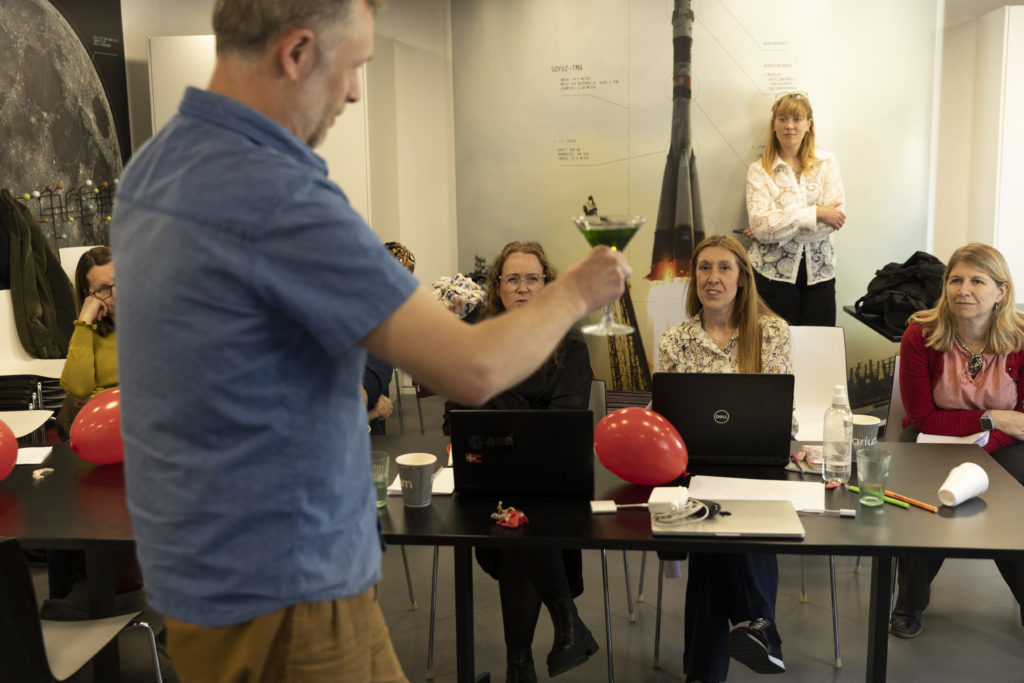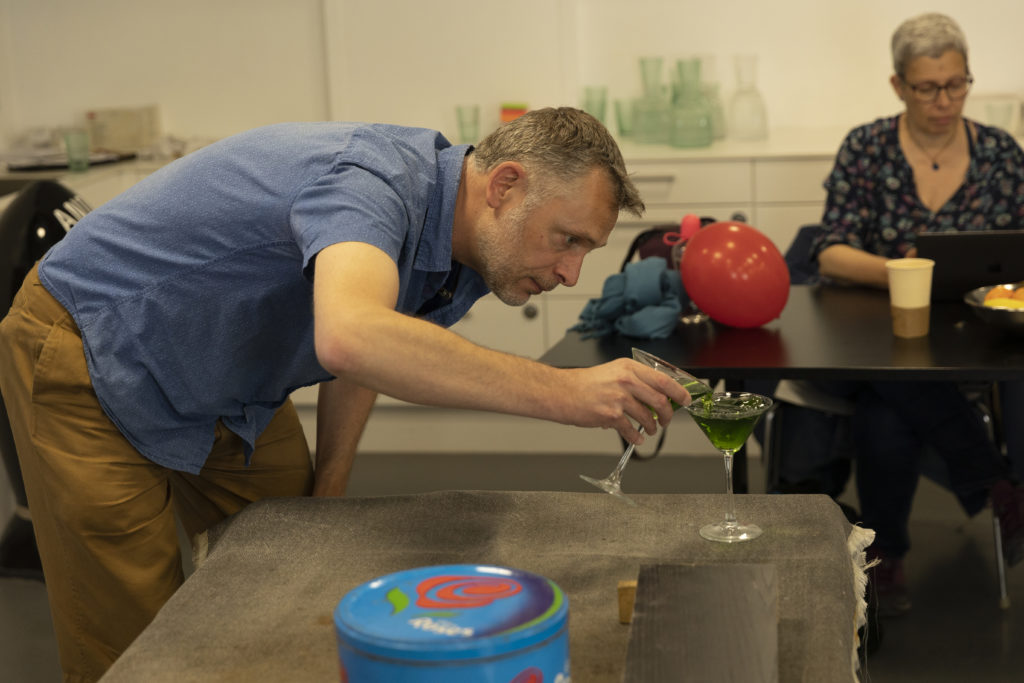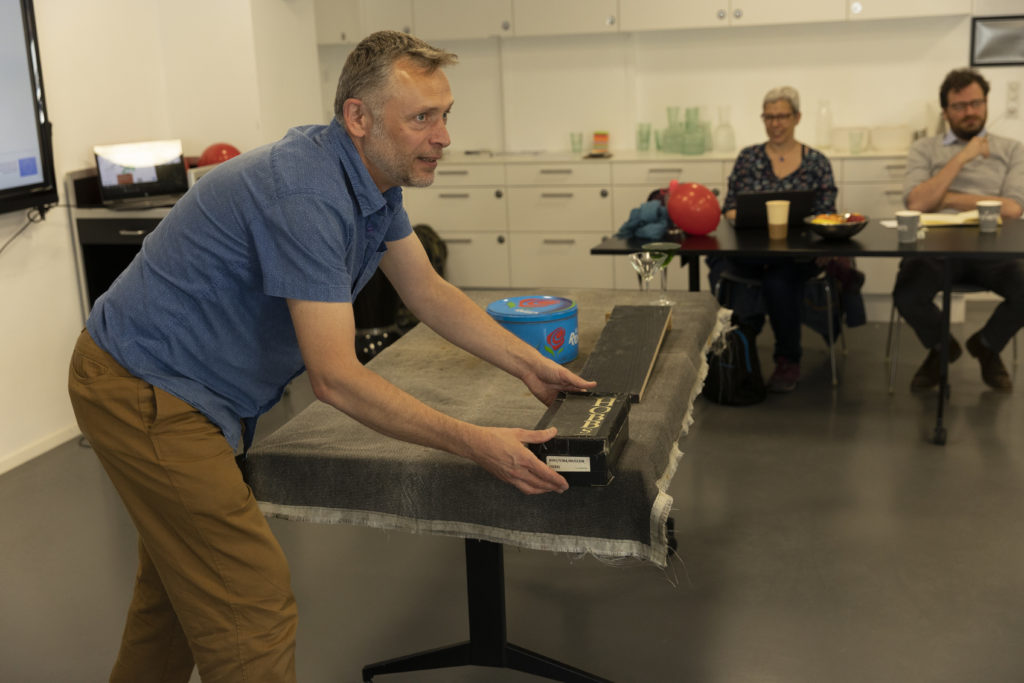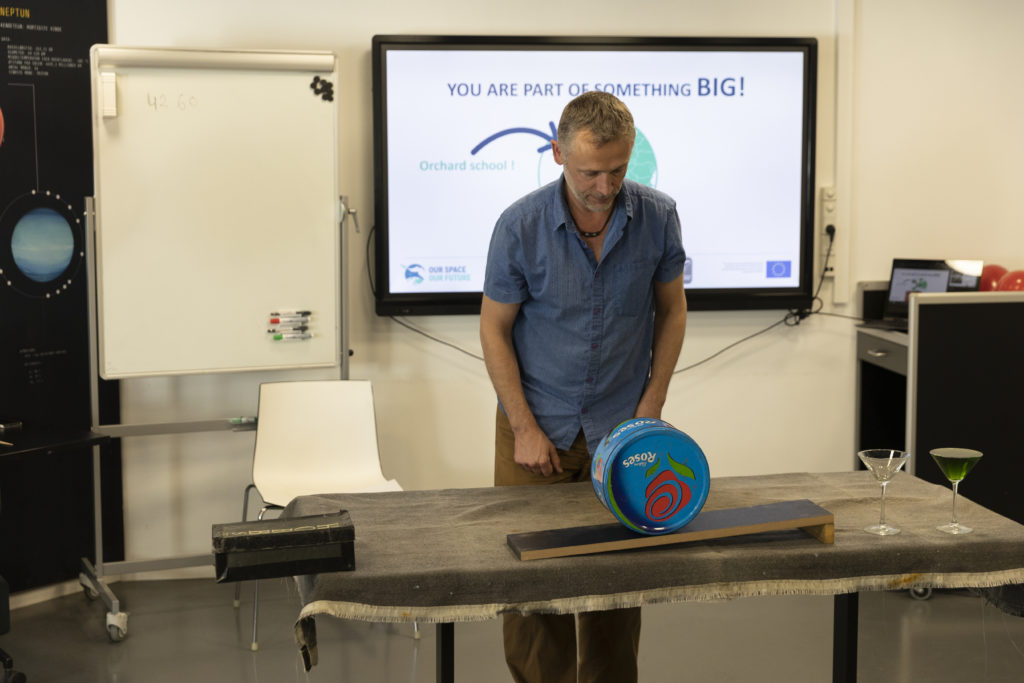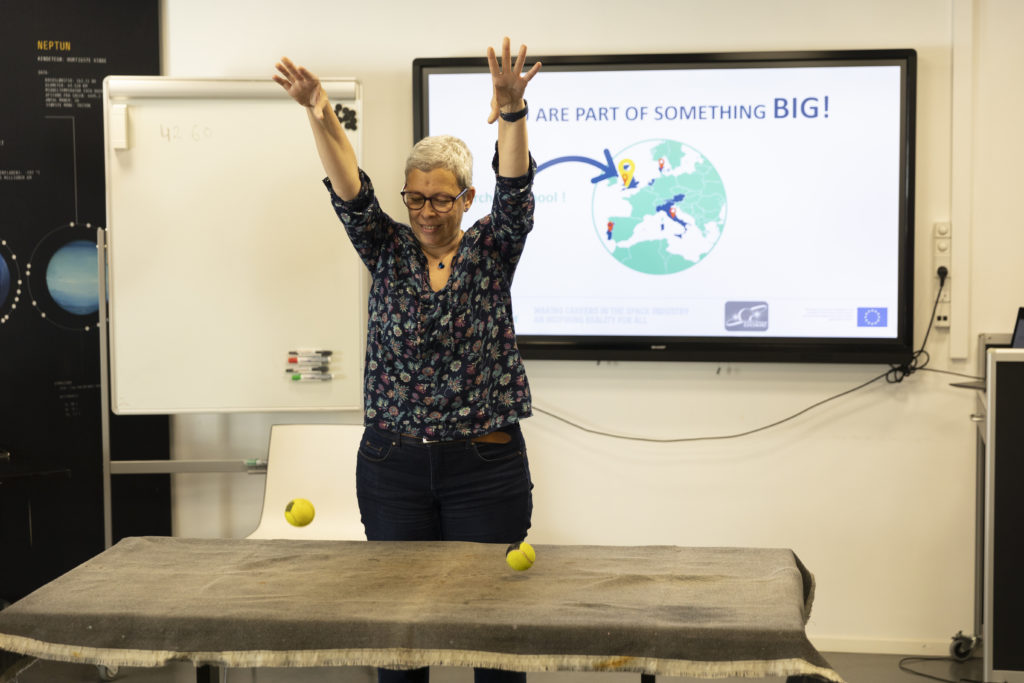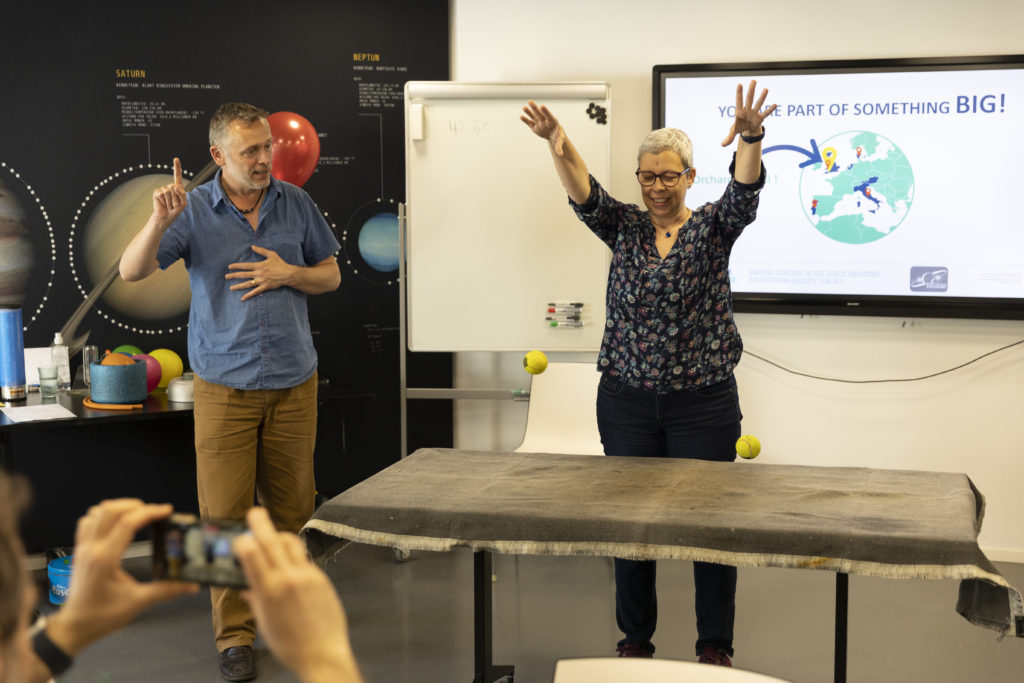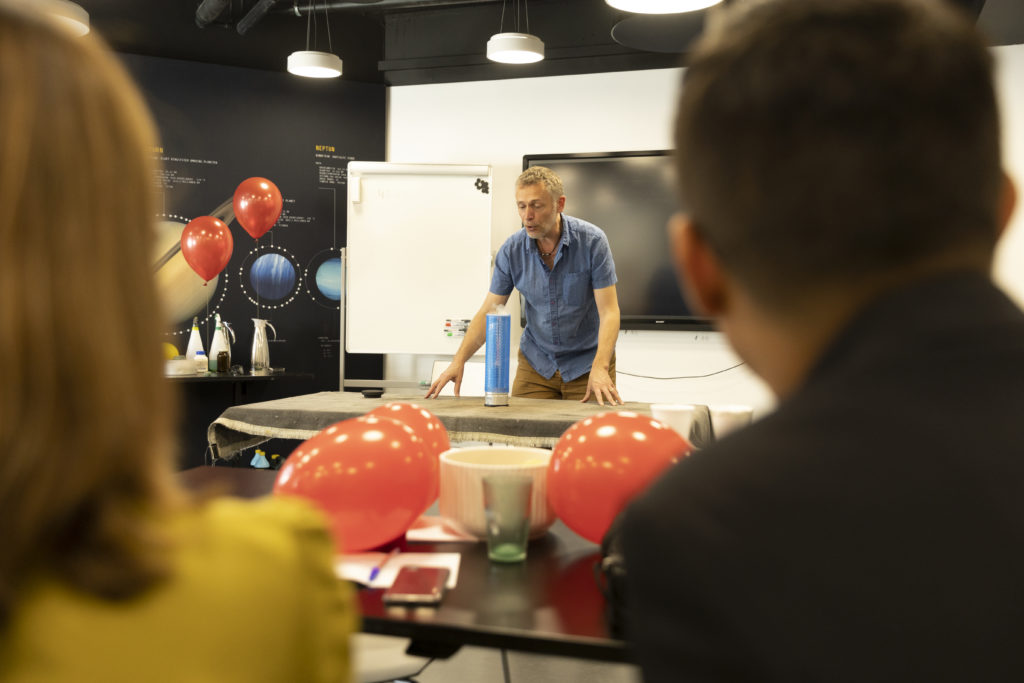Setting Details
These demonstrations are ideally delivered in-person, using tables set up in front of an audience, either on chairs or with auditorium seating. They can easily be delivered in a classroom setting, and online provided you have a decent webcam and audio devices.
These demonstrations form the opening section to a longer show examining the nature of science and scientific process;
- observe,
- predict,
- test,
- and explain.
The demos seem to defy the expectations of the audience; and thus, they are required to question the outcomes. It is by this process of questioning that they arrive at the true explanations of what they have witnessed.
Children are encouraged to contribute to the discussion, and debating is also promoted amongst the audience. An informal, conversational delivery style will encourage those who are less confident to join in.
Learning Objectives
- Stimulate curiosity -essential for exploring roles in the space industry
- Encourages scientific and critical thinking – a useful life skill
- Re-enforcing knowledge of scientific methodology – underpins space science
- Volumes of 3D shapes
- Gravity – Understanding gravity is fundamental to most space science
- Centre of mass
Materials needed
- At least one large table. Two or three tables would be best
- 1-metre wooden plank and a 4cm high object to create a sloping ramp
- A circular tub or tin (biscuit tin or similar) with a plasticine weight attached to the inside wall
- Two Martini glasses
- Shoe box with one end weighted with plasticine weight or similar
Script/programme of activity
At the start of the session, begin with a question – “who likes magic? With a magic show you are not supposed to guess how the tricks are performed, but as a scientist, we have to observe, predict, test & explain”.
Now point to the Martini glasses – they are both halves full but due to the nature of their conical shape, they appear more than half full. Ask the audience to first give some suggestions as to how full they are (3/4, 75% etc.). Then ask them to predict what will happen when you pour one into the other (will it overflow and make a big mess?). If done correctly, the glasses do not overflow. Ask the audience to explain this result!
Move on to the weighted tin which, when positioned correctly, will appear to roll up the wooden “hill”, and the weighted shoe box will seem to defy gravity when placed on the edge of the table.
The message is that sometimes the outcome of an experiment can often defy your expectations and that you shouldn’t always trust your eyes or what you think you know. Be good scientists! Observe, predict, test and explain.
Teacher/educator
It is useful for the teacher/educator to encourage the quieter members of the class to join in with discussions.
Key elements for inclusivenes
These demos require the audience to guess the outcomes of each experiment, and this is achievable for most audience members.
Websites
Martini Glass: https://datagenetics.com/blog/february32020/index.html
Tin rolling up hill: https://www.birminghammuseums.org.uk/school_resources/anti-gravity-biscuit-tin


